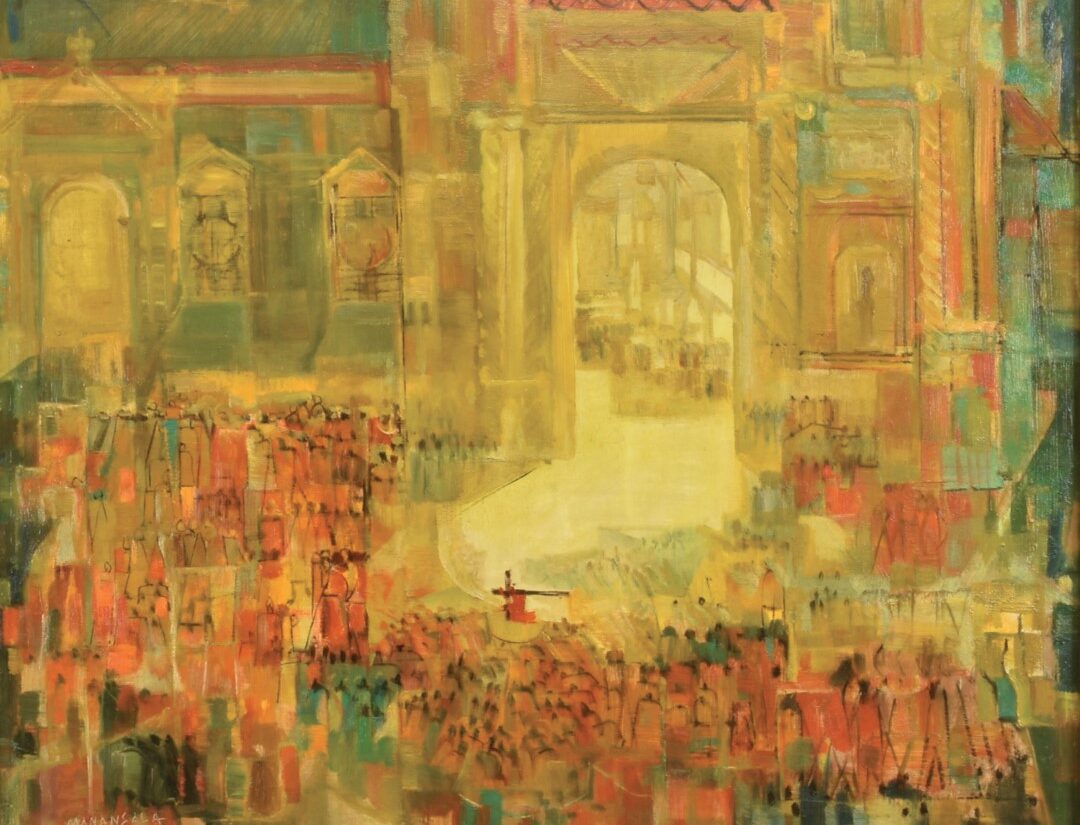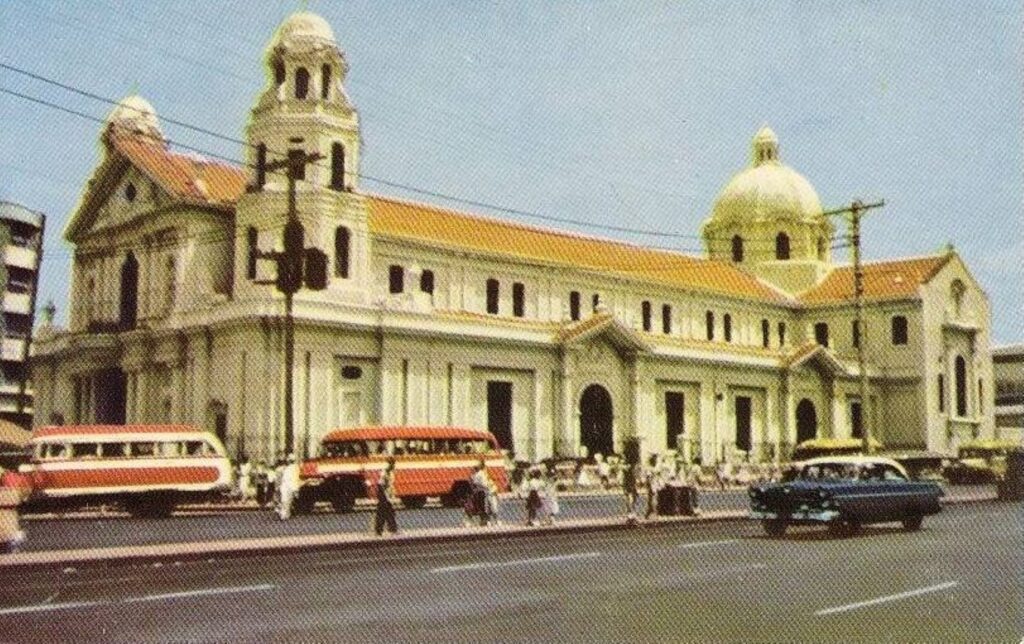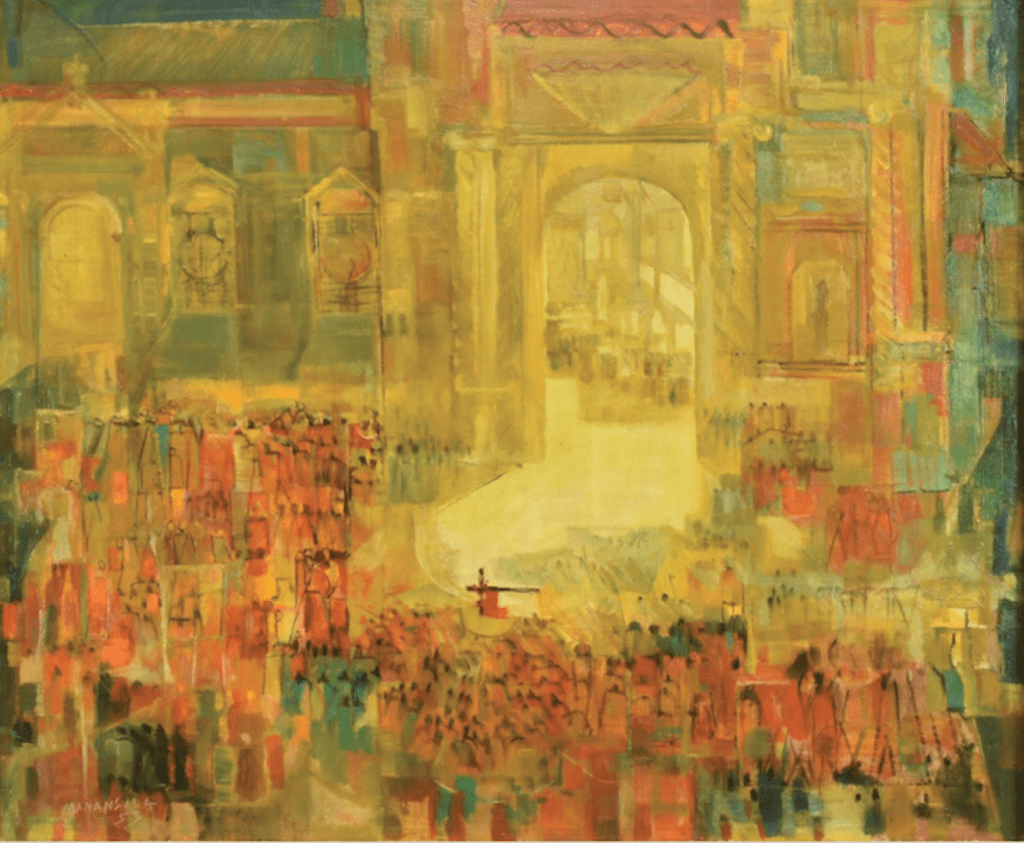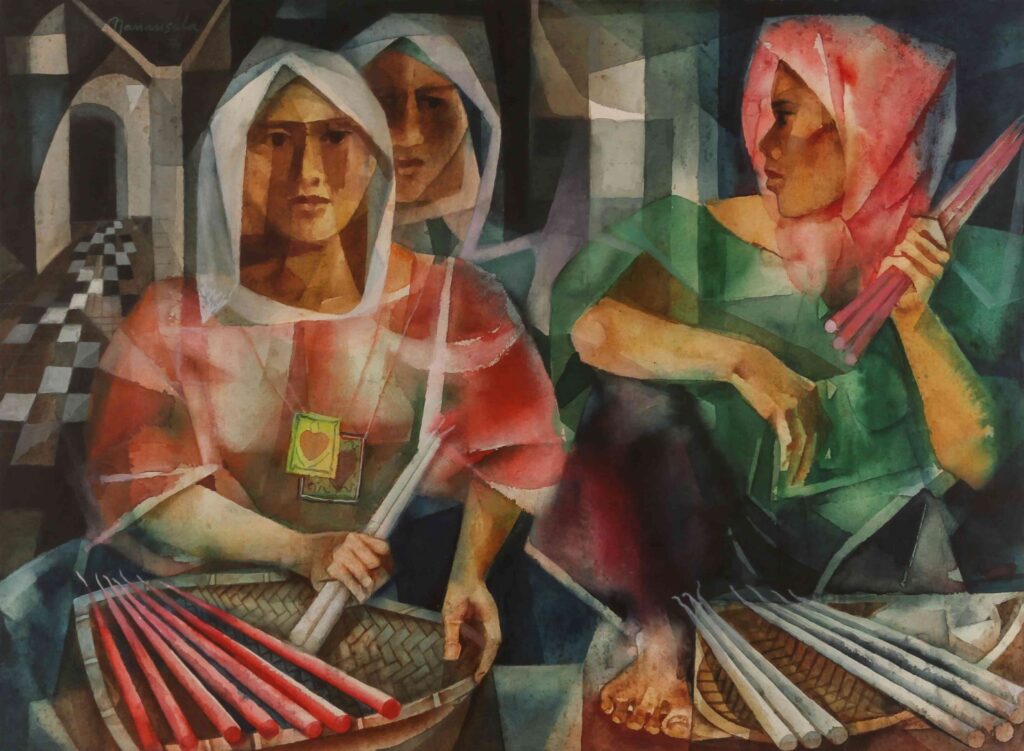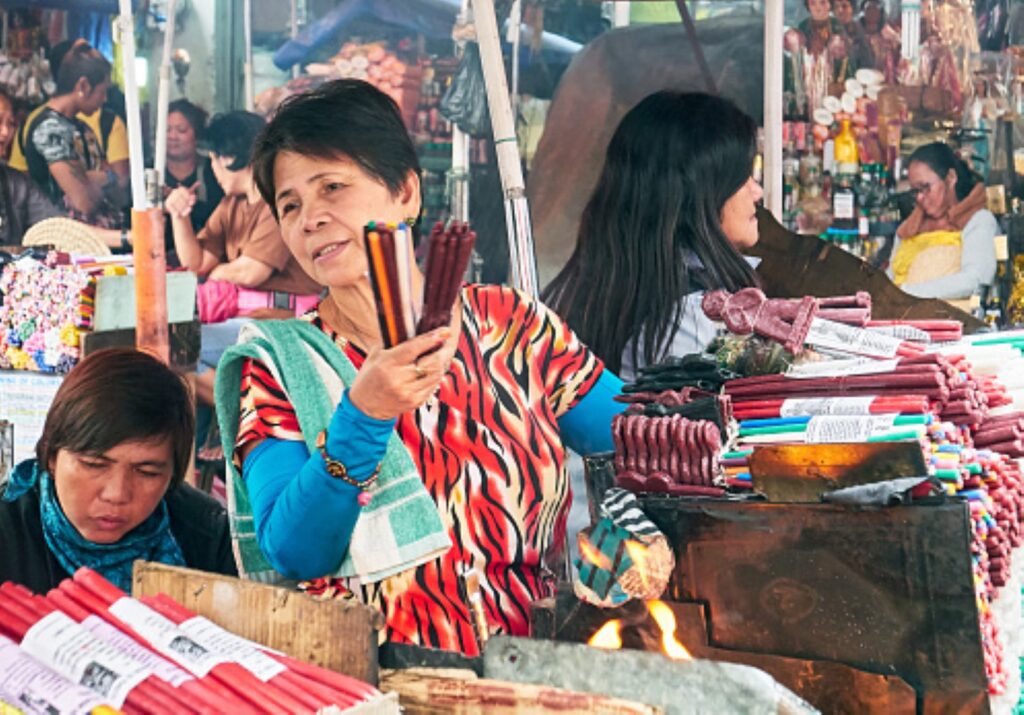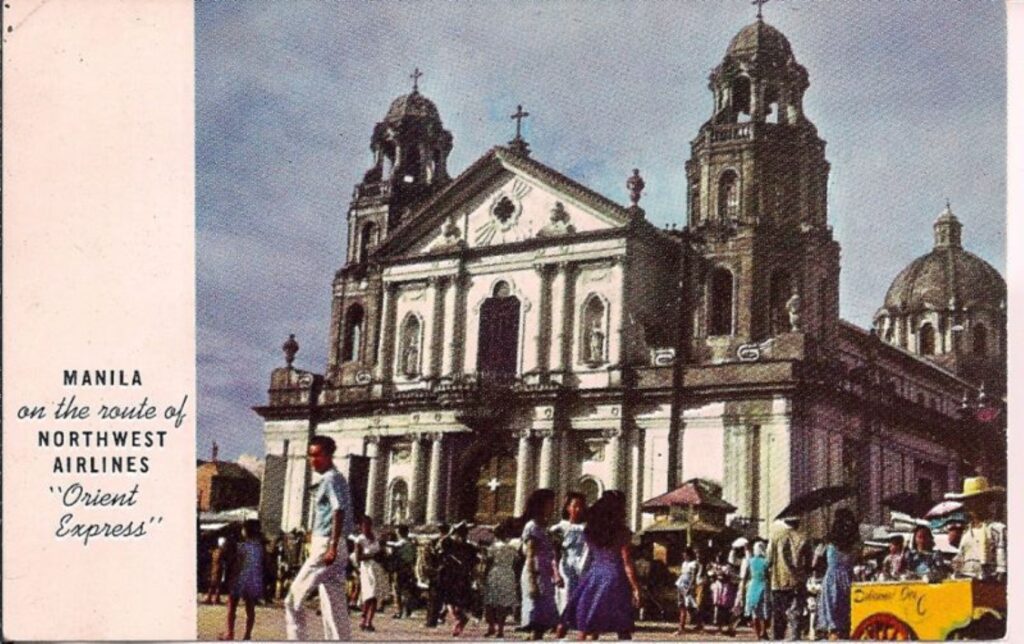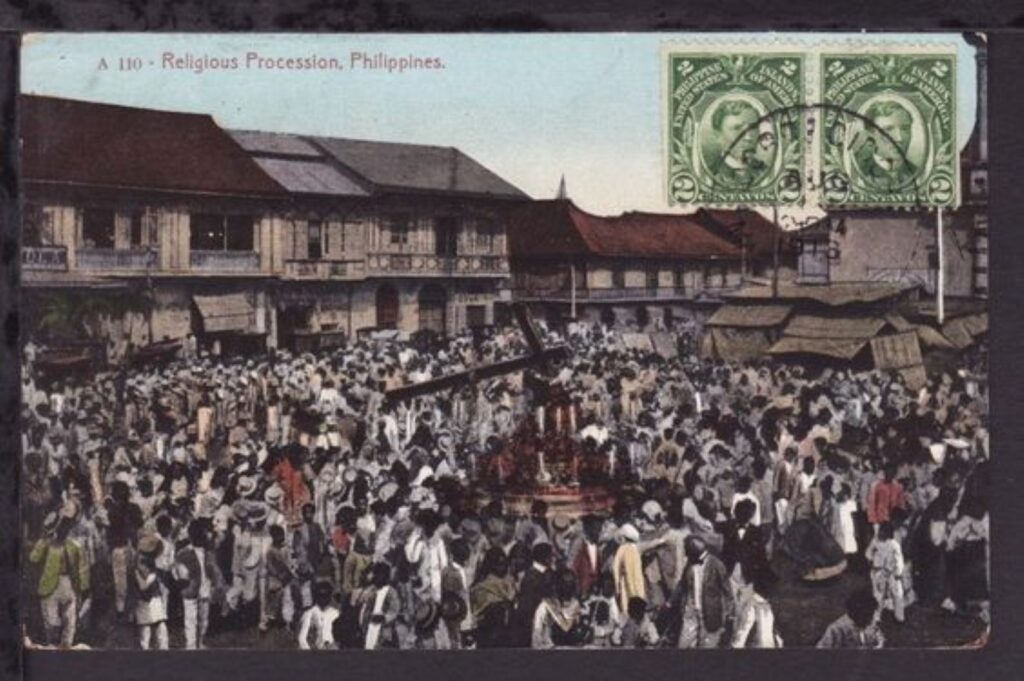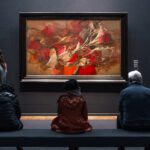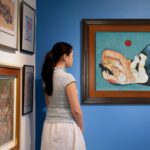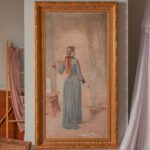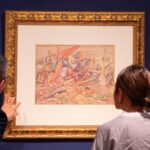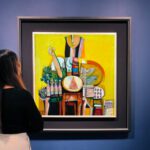Manila is an ecosystem that thrives on the constant hustle and bustle inside the once walled city. Throughout history, it has been witness to many battles and glorious rebirths. Its old cobblestone streets hold the stories of our colorful past as a nation— which explains how it has evolved into a city where both long-standing traditions and animistic beliefs almost naturally coexist.
In the midst of this huge buzzing city lies the district of Quiapo, home to one of Manila’s most iconic cultural landmarks, the Quiapo Church. This quaint district embodies the very essence of Philippine Folk Catholicism, where the old and the new remain closely intertwined. National Artist, Vicente Manansala, perfectly captures this blend of tradition and popular belief that breathes life into the spirited district in his 1953 oil on board painting, Quiapo.
One may wonder, what is it precisely that draws people, including Manansala, to this particular district of Manila? The answer, perhaps, is found in the peculiarity of Quiapo itself.
Quiapo Church serves as the epicenter of this effervescent district. Just outside the doors of this holy house, there are several market stalls with vendors that sell the tangible products of Folk Catholicism. Most of the time, these products come in the form of multi-colored candles and suspiciously bottled potions, the actual contents of which are known only to their purveyors. These items for sale promise the buyer instant cure-alls for all sorts of problems, heartbreak related or otherwise.
The almost communal fixation with magic spills into the inside of the church as well, with the statue of the Black Nazarene in the heart of this mysticism.
Year after year, extreme devotees of the Black Nazarene brave the feverish Manila heat and the teeming crowds merely to get a glimpse of the statue during the Traslación. During the Traslación, which is the procession of the 17th-century statue around Manila, it’s almost as if the religious effigy becomes supercharged with divine powers. On any other day, the same statue of the Black Nazarene goes unnoticed inside Quiapo Church.
Each year, the attendance of the Traslación grows bigger and bigger. Neither torrential rain nor excessive sunshine can stop the devotees from making this annual pilgrimage to Quiapo Church. This tenacity is indicative of both the strength of the Filipino spirit and the enduring power of traditions. After all, the city has seen many moons, and still, the tradition of the Traslación remains amid the centuries of change.
Quiapo Church remains to be the key focal point even in Manansala’s Quiapo. The spirit of Manila, with its endless throngs of people and electrifying energy, is captured on the artist’s canvas. One need not be an art connoisseur to be captivated by the overwhelming feeling of hope and light that radiates from this particular work of art.
Quiapo is a stunning piece with an equally remarkable position in the timeline of Philippine art. It was completed in 1953, two years after the completion of Jeepneys, Manansala’s iconic masterpiece and the crown jewel of the Ateneo Art Gallery collection. With its homegrown subject matter and the lively interplay of line and color, Jeepneys has become emblematic not only of the Philippine Folk Art Genre but of the Filipino experience in general.
Both Jeepneys and Quiapo belong to the transitional period of Manansala’s painting style, as he moved away from his earlier post-impressionist works towards his later celebrated transparent cubist style. In Quiapo, opaque colors interweave into each other, as devotees become one with each other and the space they inhabit. While dark outlines delineate the individual, their bodies are swathes of hue that ebb and flow onto one another. The painting depicts power and identity, grounding the image of God into tangible forms while still retaining its otherworldly splendor.
Manansala frames power as reality akin to traditional Philippine folk thought, presenting it as a divine energy that animates and illuminates the world within the canvas. Quiapo presents itself not only as a depiction of Manansala’s Manila or visual reminder of the Filipino faith, but as a once-in-a-lifetime opportunity to own a tactile piece of our history.
Vicente Manansala’s Quiapo is being offered as part of the ‘Important Philippine Art’ category of ‘The Well-Appointed Life’ Auction. To view the entire catalogue, click here.
